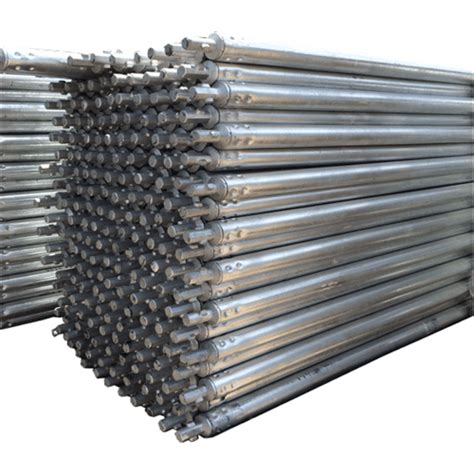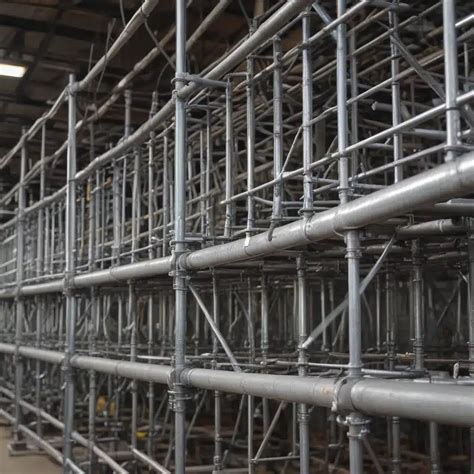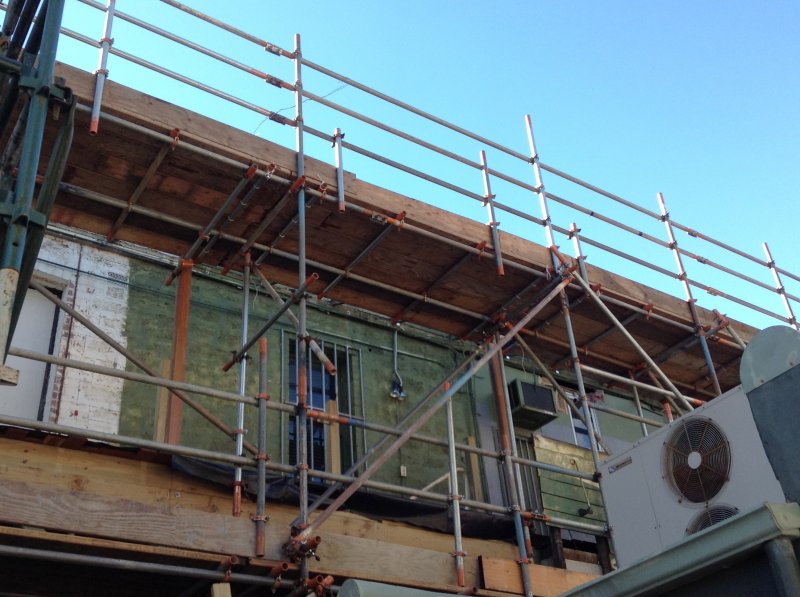Content Menu
● Understanding Scaffolding Tubes and Fittings
>> What Are Scaffolding Tubes?
>> What Are Scaffolding Fittings?
● Key Factors to Consider Before You Buy Scaffolding Tube and Fittings
>> 1. Material Quality and Standards Compliance
>> 2. Condition of Used vs. New Components
>> 3. Compatibility and Interchangeability
>> 4. Project Requirements: Load, Height, and Layout
>> 5. Safety Features
● Where to Buy Scaffolding Tube and Fittings
>> Online Suppliers and Marketplaces
>> Local Distributors and Hardware Stores
● How to Inspect Scaffolding Tubes and Fittings Before Purchase
>> Visual Inspection Checklist
>> Testing and Certification
● Assembly Tips for Scaffolding Tubes and Fittings
● Maintenance and Storage of Scaffolding Tubes and Fittings
● Conclusion
● FAQ
>> 1. What should I check when buying scaffolding tube and fittings?
>> 2. Can I mix different brands of scaffolding tubes and fittings?
>> 3. How do I know if scaffolding tubes are safe to reuse?
>> 4. What are the benefits of buying scaffolding tubes and fittings in sets?
>> 5. Where can I buy scaffolding tubes and fittings online?
Purchasing scaffolding tube and fittings is a critical decision for contractors, builders, and DIY enthusiasts alike. The right scaffolding components ensure safety, efficiency, and compliance on any construction or maintenance project. This comprehensive guide covers everything you need to know before you buy scaffolding tube and fittings, including types, materials, safety standards, inspection tips, and buying strategies.

Understanding Scaffolding Tubes and Fittings
What Are Scaffolding Tubes?
Scaffolding tubes are the primary structural elements of a scaffolding system. They are long cylindrical pipes, usually made of steel or aluminum, that form the vertical and horizontal framework supporting platforms and workers.
- Material: Most scaffolding tubes are made of galvanized steel for strength and corrosion resistance. Aluminum tubes are lighter but less common in heavy-duty applications.
- Dimensions: Standard tubes typically have an outer diameter of 48.3 mm and varying wall thicknesses depending on load requirements.
- Length: Commonly available in 6-meter lengths, but can be cut to size.
What Are Scaffolding Fittings?
Fittings (or couplers) are the components that join scaffolding tubes together. They come in various types, each serving a specific purpose:
- Right Angle Couplers: Connect tubes at 90 degrees, typically used to join ledgers to standards.
- Swivel Couplers: Allow tubes to connect at any angle, ideal for complex scaffolding layouts.
- Putlog Couplers: Attach scaffold tubes to a building or support structure.
- Sleeve Couplers: Join two tubes end-to-end to extend length.
- Board Supports: Hold scaffold boards/platforms in place.
Key Factors to Consider Before You Buy Scaffolding Tube and Fittings
1. Material Quality and Standards Compliance
- Steel Tubes: Should be made from high-quality, hot-dip galvanized steel to resist corrosion. Check compliance with standards like BS 1139, EN 39, or OSHA regulations.
- Fittings: Must be forged steel or equivalent, capable of withstanding heavy loads and stress. Avoid cheap cast fittings which may fail under pressure.
- Certifications: Always ask for test certificates and compliance documentation from suppliers.
2. Condition of Used vs. New Components
- New Tubes and Fittings: Offer guaranteed strength, warranty, and compliance.
- Used Components: Can be cost-effective but require thorough inspection for cracks, corrosion, deformation, and wear. Used tubes should be straight, free from splits, and have clean-cut ends.
- Inspection Tips: Look for rust, dents, clamp wear, and ensure tubes are not bent or twisted.
3. Compatibility and Interchangeability
- Ensure fittings match the tube diameter (commonly 48.3 mm).
- Buy from suppliers offering compatible brands or sets to avoid assembly issues.
- Consider buying complete sets for easier integration.
4. Project Requirements: Load, Height, and Layout
- Calculate the maximum load your scaffolding will bear, including workers, tools, and materials.
- Determine the required height and platform size.
- Consider the site layout-tube and clamp scaffolding offers flexibility for irregular shapes.
5. Safety Features
- Confirm that fittings provide secure locking mechanisms.
- Look for guardrails, toe boards, and base plates as part of the system.
- Ensure the scaffolding components allow for proper bracing and stability.

Where to Buy Scaffolding Tube and Fittings
Online Suppliers and Marketplaces
- Yatco Gulf: Offers a complete guide and quality scaffolding tubes for sale.
- AAIT Scaffold: Provides expert tips and a variety of scaffolding components.
- ScaffoldType.com: Detailed guides on different scaffolding types and buying advice.
- First Fence Ltd: Wide range of scaffolding fittings for various project sizes.
- Leach's: Offers scaffold fittings, boards, and tubes with bulk buying options.
Local Distributors and Hardware Stores
- Visit specialized scaffolding suppliers to inspect products physically.
- Buying locally can reduce shipping costs and allow easier returns or exchanges.
How to Inspect Scaffolding Tubes and Fittings Before Purchase
Visual Inspection Checklist
- Check tubes for corrosion, rust, dents, and straightness.
- Inspect clamp threads and bolts for wear or damage.
- Verify that couplers open and close smoothly and lock firmly.
- Examine scaffold boards for cracks, splits, or rot.
Testing and Certification
- Request proof of compliance with relevant safety standards.
- Where possible, conduct load testing on sample components.
Assembly Tips for Scaffolding Tubes and Fittings
- Use the correct type of coupler for each connection point.
- Tighten clamps to the recommended torque (usually around 45 foot-pounds).
- Stagger joints in vertical standards to increase strength.
- Install guardrails and toe boards on all working platforms.
- Ensure the scaffold is plumb and level before use.
Maintenance and Storage of Scaffolding Tubes and Fittings
- Store tubes horizontally on racks, off the ground, and covered.
- Clean tubes and fittings regularly to remove dirt and prevent corrosion.
- Lubricate clamp threads to prevent galling.
- Replace damaged or worn components immediately.
Conclusion
Buying scaffolding tube and fittings is a significant investment in the safety and success of your project. Understanding the types of scaffolding, material quality, compatibility, and safety standards is essential before you buy scaffolding tube and fittings. Whether purchasing new or used components, thorough inspection and sourcing from reputable suppliers will ensure a safe, durable, and efficient scaffolding system.
By following the expert tips and guidelines outlined in this article, you can confidently select the right scaffolding tubes and fittings tailored to your project's specific needs.

FAQ
1. What should I check when buying scaffolding tube and fittings?
Check material quality, compliance with safety standards, condition (especially if used), and compatibility of fittings with tubes.
2. Can I mix different brands of scaffolding tubes and fittings?
It is possible but not recommended unless the components are certified compatible. Mixing brands can lead to unsafe connections.
3. How do I know if scaffolding tubes are safe to reuse?
Used tubes should be free from cracks, splits, excessive corrosion, and should be straight with clean-cut ends.
4. What are the benefits of buying scaffolding tubes and fittings in sets?
Sets ensure compatibility, often come with warranties, and simplify assembly and maintenance.
5. Where can I buy scaffolding tubes and fittings online?
Reputable online suppliers include Yatco Gulf, AAIT Scaffold, First Fence Ltd, and Leach's, offering both new and used components.






















